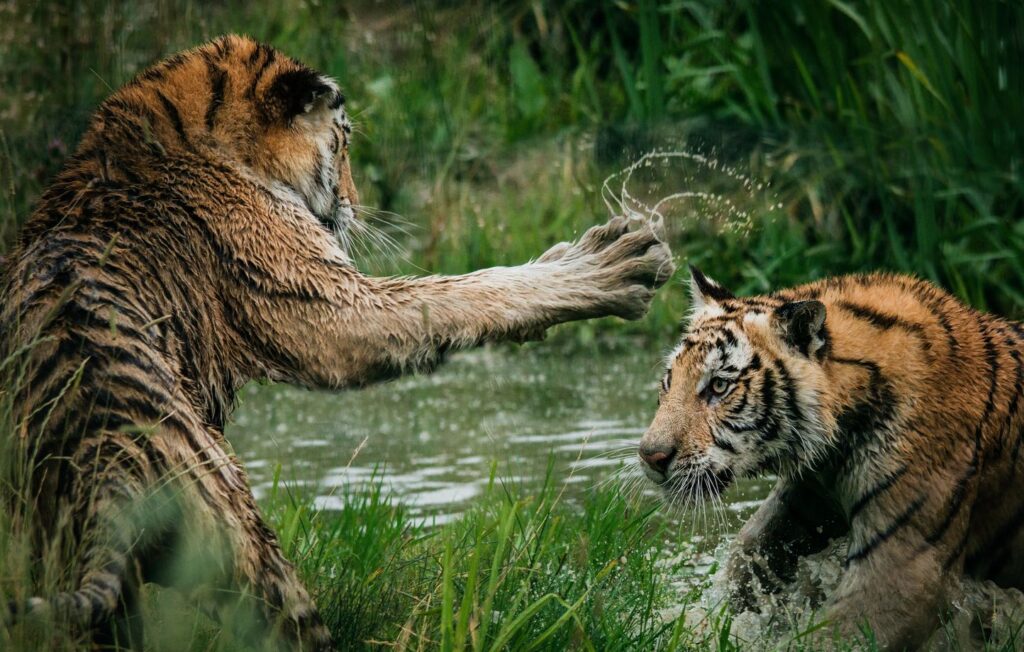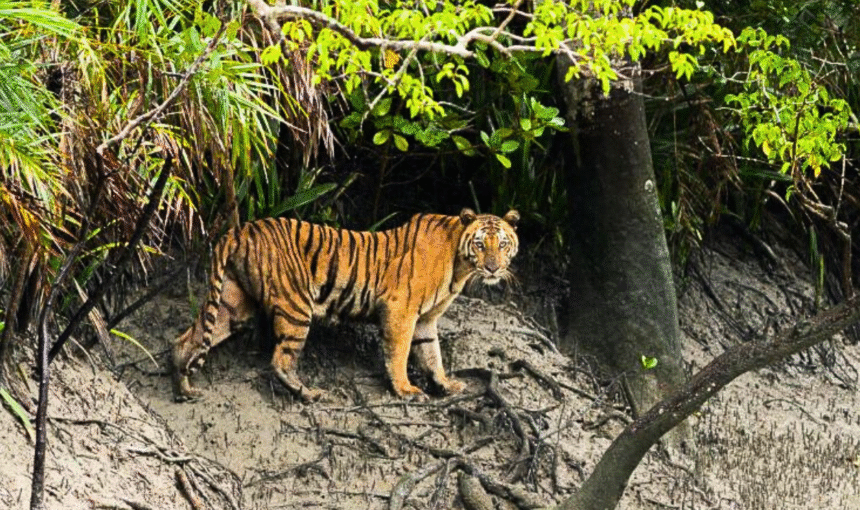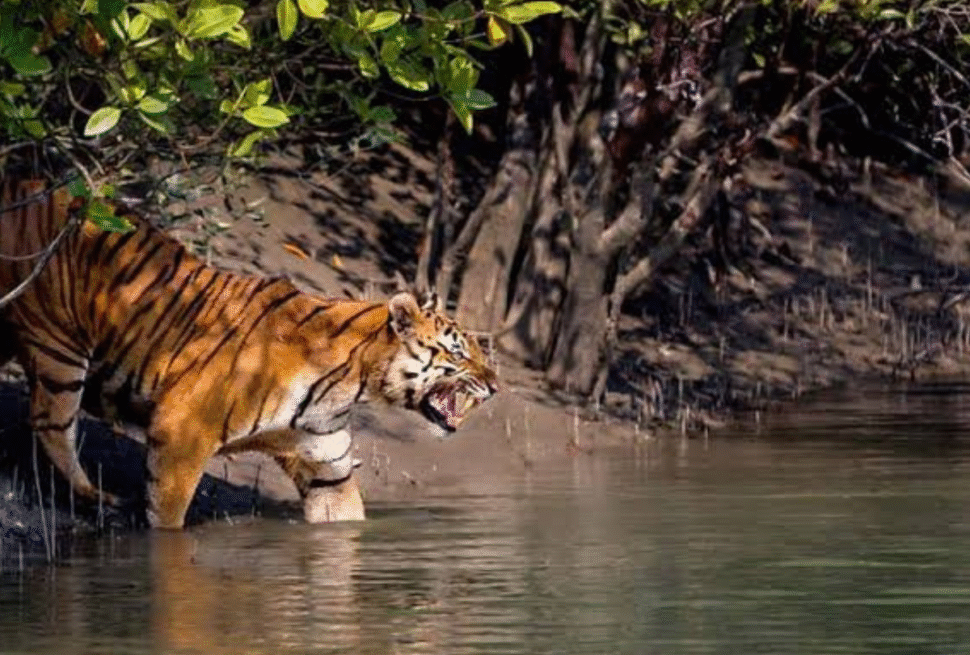
Royal Bengal Tigers : Deep in the heart of the world’s largest mangrove forest lives a truly extraordinary predator—the Sundarbans tiger. These rare Royal Bengal tigers are not only iconic symbols of strength and mystery but also vital to the fragile ecosystem of the Sundarbans National Park, which stretches across India and Bangladesh.

The Sundarbans, a UNESCO World Heritage Site, is a vast delta formed by the confluence of the Ganges, Brahmaputra, and Meghna rivers. Its dense mangrove forests, tidal waterways, and mudflats create a challenging environment for wildlife. Yet, the Royal Bengal tiger has adapted in remarkable ways, making this region one of the most unique tiger habitats in the world.
Unique Adaptations of Royal Bengal Tigers
What sets the Royal Bengal tigers apart from their counterparts in other parts of Asia? For one, they are exceptional swimmers, often seen gliding through rivers and estuaries in search of prey. Their diet includes fish, crabs, and even monkeys and deer—whatever they can catch in this waterlogged terrain.
Interestingly, these tigers are known for being more aggressive than other tiger populations. Scientists believe that the harsh living conditions, limited prey, and intense competition have shaped their behavior over generations.
Cultural and Spiritual Significance
To the local communities who live on the edges of the forest, the tigers of the Sundarbans are both feared and revered. Many villagers pray to the forest goddess Bonbibi before entering tiger territory, seeking protection from potential attacks. This deep spiritual connection reflects the tiger’s profound role in the cultural fabric of the region.
Conservation Challenges and Efforts
Despite their resilience, Royal Bengal Tigers face growing threats. Climate change, rising sea levels, and increased salinity are shrinking their natural habitat. Human-wildlife conflict, deforestation, and illegal poaching further endanger their survival.

In response, both the Indian and Bangladeshi governments have launched several wildlife conservation initiatives. These include tiger census projects, GPS tracking, camera traps, and community education programs. The Sundarbans is now a designated tiger reserve, and international support continues to grow for its protection.
Why Protecting Royal Bengal Tigers Matters
Preserving the Royal Bengal tigers population in the Sundarbans is about more than saving a single species. These big cats are apex predators—key indicators of ecological balance. Protecting them also means protecting the entire Sundarbans ecosystem, which acts as a natural shield against cyclones, floods, and other climate disasters.
In a world increasingly vulnerable to environmental change, the story of the Royal Bengal Tigers is a powerful reminder of the importance of coexistence between humans and nature. By supporting tiger conservation, we help secure the future of one of Earth’s most extraordinary wild landscapes.











